Author: Matt Waldron
Currently recognized as one of the most popular hops to come out of Australia, Galaxy is lauded for the strong passionfruit, peach, and citrus character it imparts in beer, which has landed on the favorites list of professional and homebrewers around the world. Unfortunately, Galaxy can a difficult variety to for a brewer to get their hands on, as it is currently only grown in Australia.
Alpha: 12 – 16%
Beta: 5 – 7%
CoH: 32 – 42% of alpha acids
Oil: 3 – 5 ml/100g
Myrcene: 33 – 69%
Humulene: 1 – 2%
Caryophyllene: 7 – 9%
Farnesene: 2 – 4%
Linalool: 0.2 – 0.6%
Geraniol: 0 – 0%
ß-Pinene: 0.6 – 0.9%
Parentage: male Perle crossed with female tetraploid (J78)
Given the growing love for Galaxy hops, I was pretty excited to use them in them single hop beer and how it was received by blind tasters.
| MAKING THE BEER |
To make sure the hop character would shine, I brewed a basic American Pale Ale recipe using only 2 base malts with multiple additions of Galaxy then fermented it with a clean ale yeast.
Galaxy Pale Ale
Recipe Details
| Batch Size | Boil Time | IBU | SRM | Est. OG | Est. FG | ABV |
|---|---|---|---|---|---|---|
| 5.5 gal | 60 min | 87.4 IBUs | 3.5 SRM | 1.052 | 1.009 | 5.7 % |
| Actuals | 1.052 | 1.015 | 4.9 % | |||
Fermentables
| Name | Amount | % |
|---|---|---|
| Pilsner (2 row) (Gambrinus) | 6 lbs | 54.55 |
| Pale Malt, Maris Otter | 4 lbs | 36.36 |
| Carapils (Briess) | 1 lbs | 9.09 |
Hops
| Name | Amount | Time | Use | Form | Alpha % |
|---|---|---|---|---|---|
| Galaxy | 28 g | 60 min | First Wort | Pellet | 16.8 |
| Galaxy | 14 g | 10 min | Boil | Pellet | 16.8 |
| Galaxy | 14 g | 5 min | Boil | Pellet | 16.8 |
| Galaxy | 60 g | 3 days | Dry Hop | Pellet | 16.8 |
Yeast
| Name | Lab | Attenuation | Temperature |
|---|---|---|---|
| Safale American (US-05) | DCL/Fermentis | 77% | 59°F - 75°F |
Download
| Download this recipe's BeerXML file |
I began my brew day by collecting the full volume of water and getting it on the stove to heat to my target strike temperature, during which I measured out and milled the grain.
Once the water was to the right temperature, I transferred it to my cooler MLT then stirred in the grains to hit my intended mash temperature.
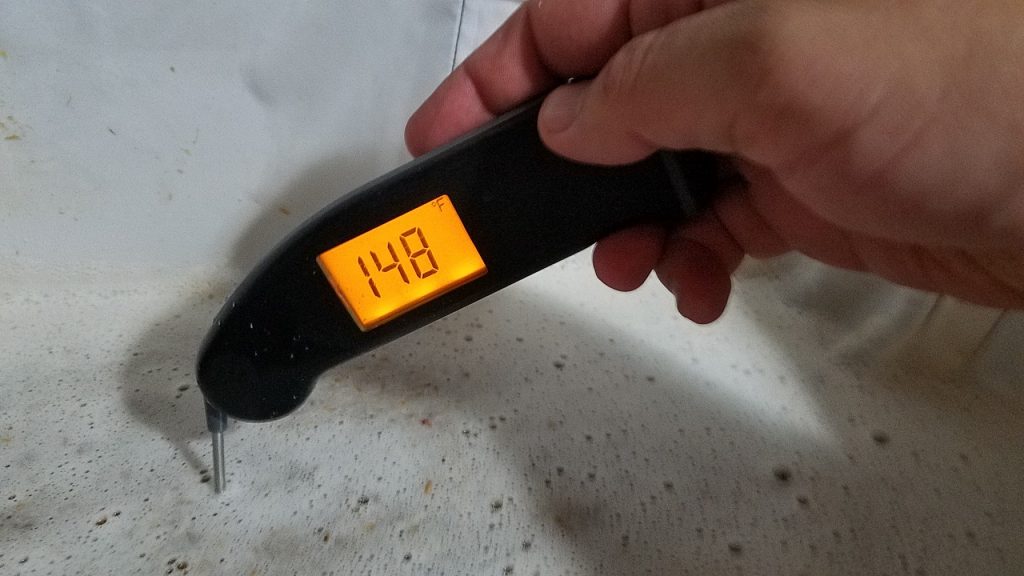
I returned a couple times during the 60 minute rest to give the mash a good stir.
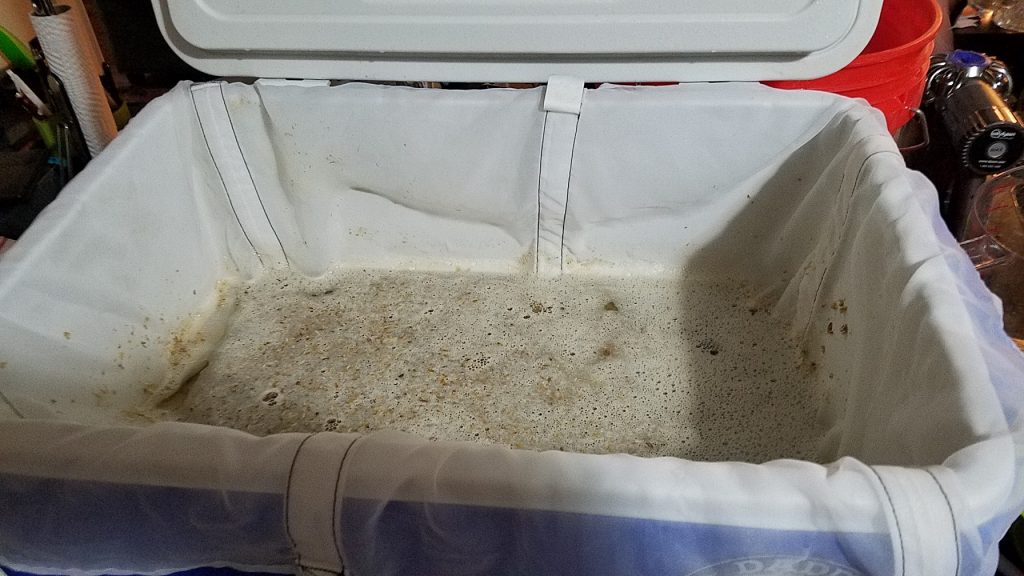
This batch would be my first using a Chapman UniVessel Brew Tank, a convenient piece of equipment that serves as both a boil kettle and fermentation vessel. Once the mash rest was complete, I began collecting the proper volume of sweet wort.
I then placed the UniVessel on my stove and quickly brought it to a rolling boil with hops added at the times listed in the recipe over the course of an hour.
When the boil was finished, I performed a 15 minute hop stand before chilling the wort to a few degrees warmer than my current groundwater temperature.
A hydrometer reading revealed I nailed my target 1.052 OG.
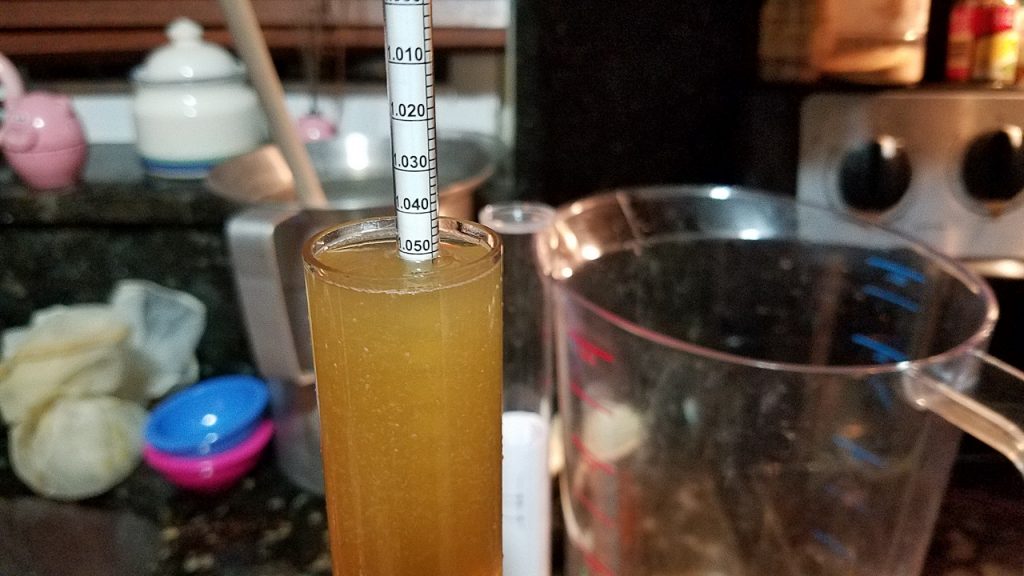 The wort was still warmer than I prefer, so I sealed the UniVessel and moved it into my cool chamber where it would remain overnight to finish chilling. The following day, I pitched the yeast.
The wort was still warmer than I prefer, so I sealed the UniVessel and moved it into my cool chamber where it would remain overnight to finish chilling. The following day, I pitched the yeast.
I noticed vigorous activity in the airlock that evening indicating fermentation had kicked off. By the following week, activity had slowed down, so I took an initial hydrometer reading indicating a 1.015 FG. This seemed a bit high to me, so I let it sit another 3 days and checked again– still at 1.015 FG. Not sure what happened, but the beer looked and tasted fine, so I cold crashed, fined with gelatin, and got it kegged up.
After a period of burst carbonation followed by a few days in my keezer at serving pressure, the beer was clear, carbonated and ready for serving!
| METHOD |
Participants were instructed to focus only on the aromatic qualities of the beer before evaluating the flavor. For each aroma and flavor descriptor, tasters were asked to write-in the perceived strength of that particular characteristic on a 0-9 scale where a rating of 0 meant they did not perceive the character at all while a 9 rating meant the character was extremely strong. Once the data was collected, the average rating of each aroma and flavor descriptor was compiled and analyzed.
| RESULTS |
A total of 20 people participated in the evaluation of this beer, all blind to the hop variety used until after they completed the survey. The average aroma and flavor ratings for each descriptor were plotted on a radar graph.
Average Ratings of Aroma and Flavor Perceptions
The 3 characteristics endorsed as being most prominent by participants:
| Aroma | Flavor |
| Citrus | Citrus |
| Tropical Fruit | Tropical Fruit |
| Stone Fruit | Floral |
The 3 characteristics endorsed as being least prominent by participants:
| Aroma | Flavor |
| Onion/Garlic | Berry |
| Spicy/Herbal | Onion/Garlic |
| Berry | Spicy/Herbal |
When asked to rate the pungency/strength of the hop, the majority of tasters perceived it as being quite strong.
Tasters were then instructed to identify beer styles they thought the hop would work well in.
Finally, participants were asked to rate how much they enjoyed the hop character on a 1 to 10 scale.
My Impressions: Southern Hemisphere aroma hops have a special place in my heart and I was very eager to see how my hop-focused recipe would display this legendary lupulin champion from down under. I was not disappointed! The brew screamed hop character, possibly a bit much for sensitive palates, but perfect for mine. The booming tropical fruit and citrus notes jumped out to the nose and followed through in the flavor. Hints of resin with a touch of catty dankness blended in well, but I perceived a grassy note in the nose and aftertaste as well. If I were making this for show, I’d keep the charmingly simple but supportive Maris Otter and Pilsner grist, but use a cleaner bittering hop while saving the Galaxy for late boil and dry hop additions.
| CONCLUSION |
Based on reactions to this hop from participants in this trial, I’d have to say that Galaxy comes as advertised, living up to its reputation for being a big fruit bomb. Notes of citrus, passion fruit, peach, and mango dominate the senses like a basket of ripe fruit at home but spirited by the glass from a strange, far away land. While I get the feeling Galaxy isn’t the cleanest of bittering hops, I would not worry too much about using it in a pinch. Overal, this beer was a crowd-pleaser with a character that’s right along the lines of other modern hops such as Citra and Mosaic. Big, bold, and uniquely flavorful, Galaxy is sure to appeal to a large range of the drinking audience.
If you’ve used Galaxy hops, we’d love to hear from you, please share your thoughts and experience in the comments section below!
Support Brülosophy In Style!
All designs are available in various colors and sizes on Amazon!
Follow Brülosophy on:
FACEBOOK | TWITTER | INSTAGRAM
If you enjoy this stuff and feel compelled to support Brulosophy.com, please check out the Support Us page for details on how you can very easily do so. Thanks!


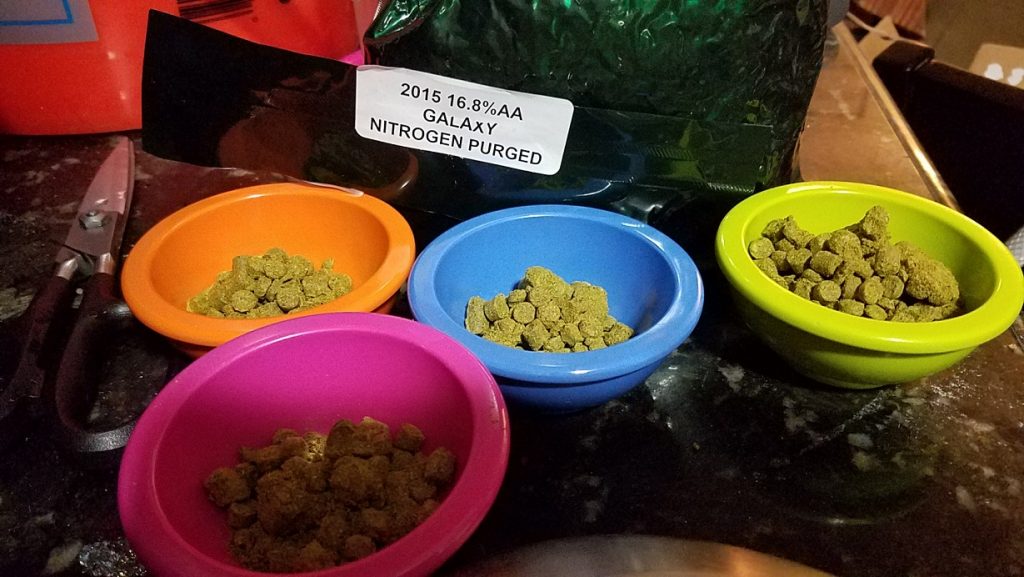
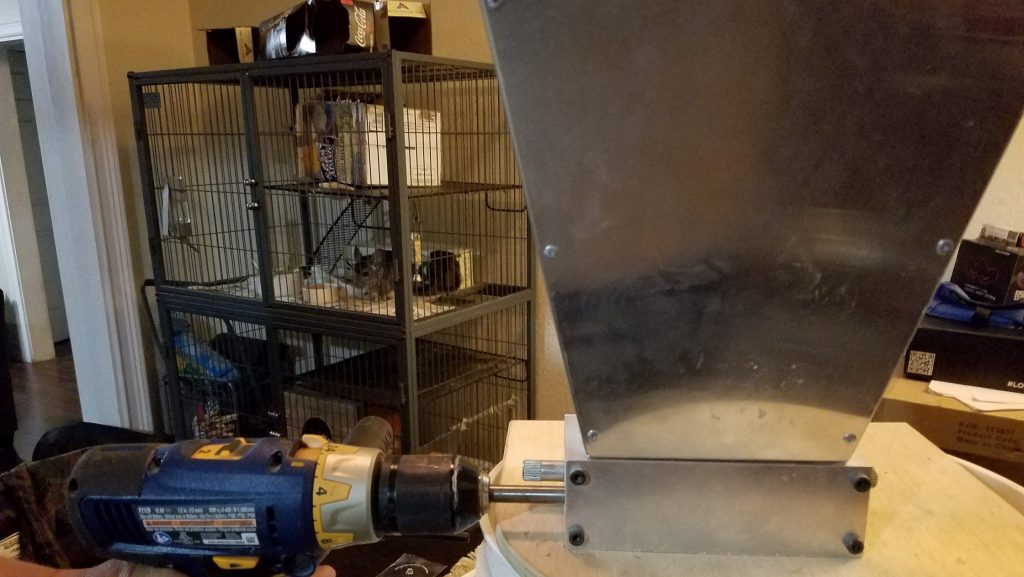
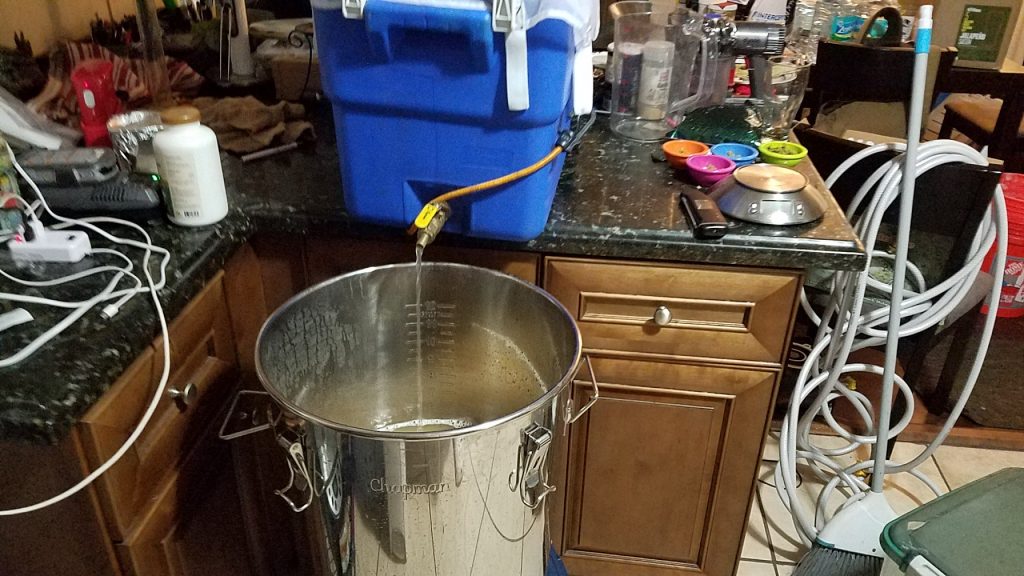
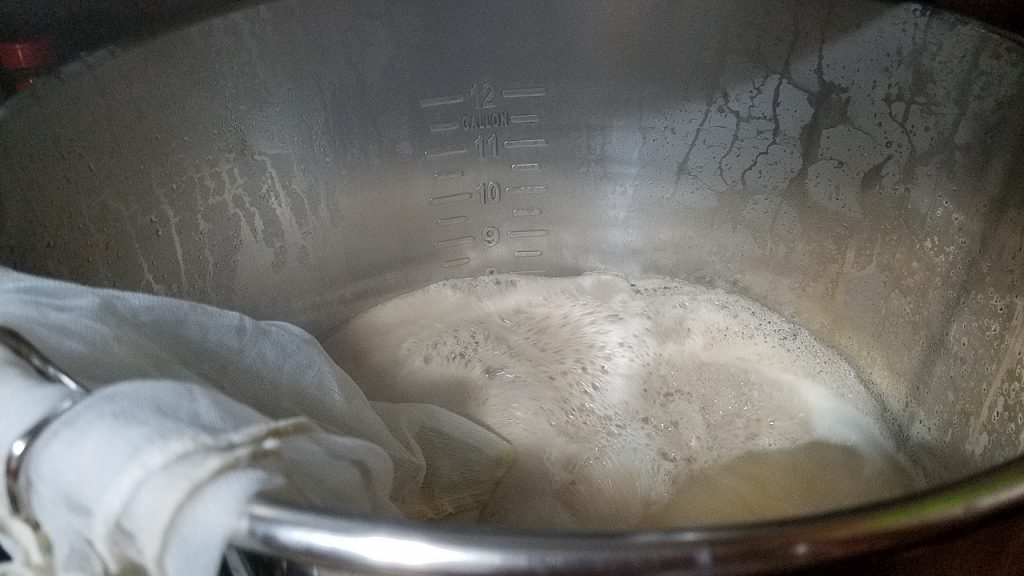

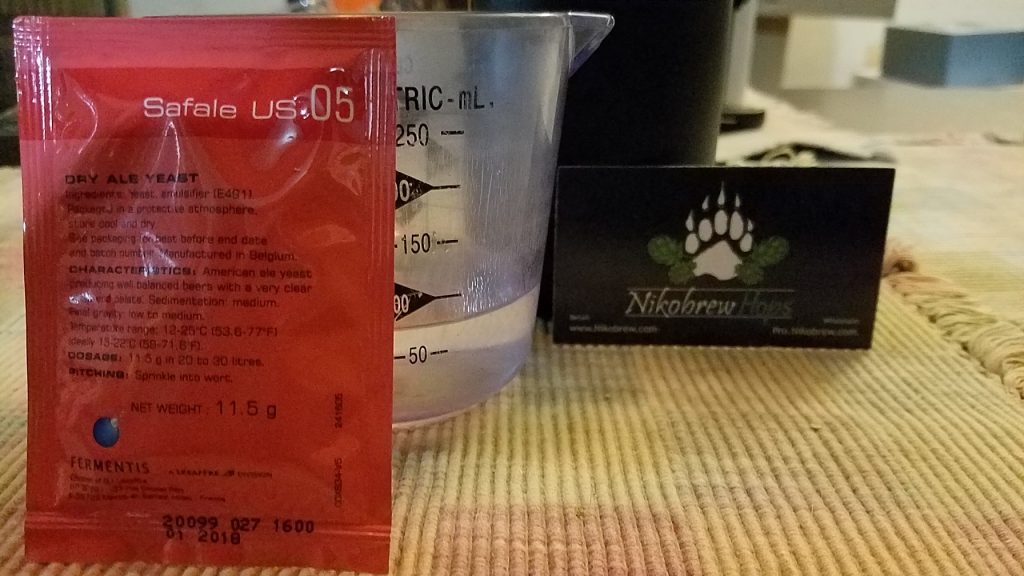
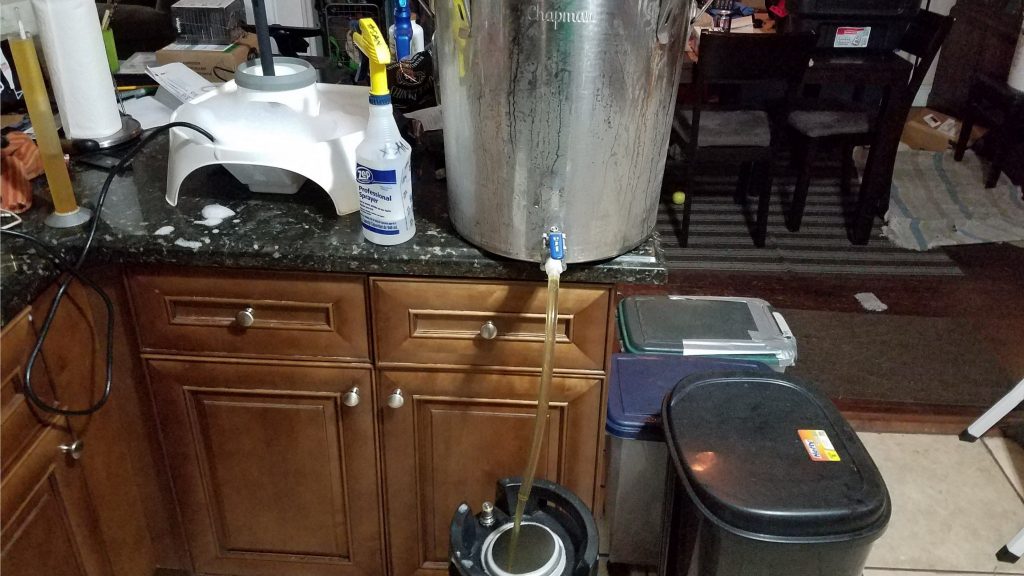
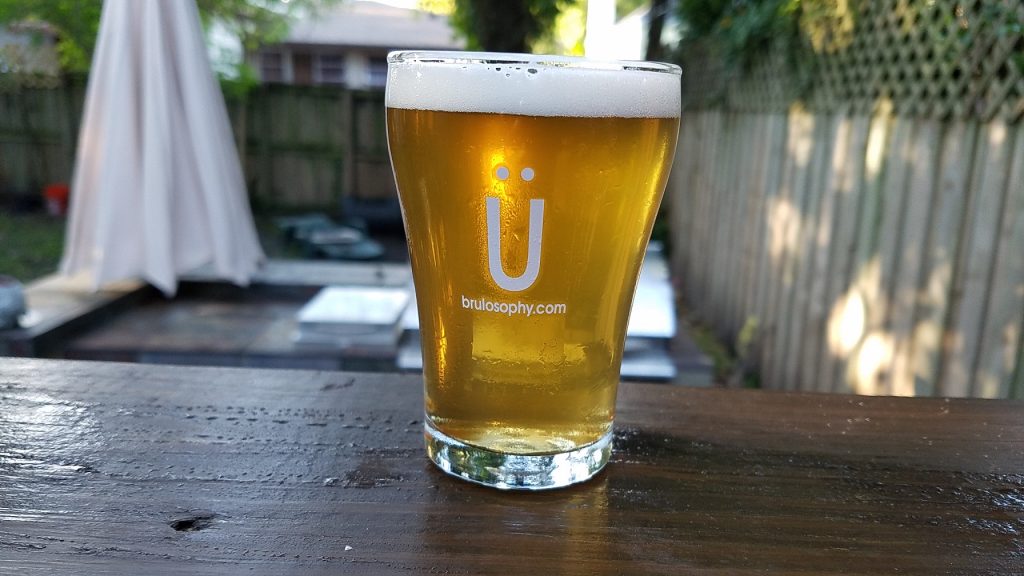
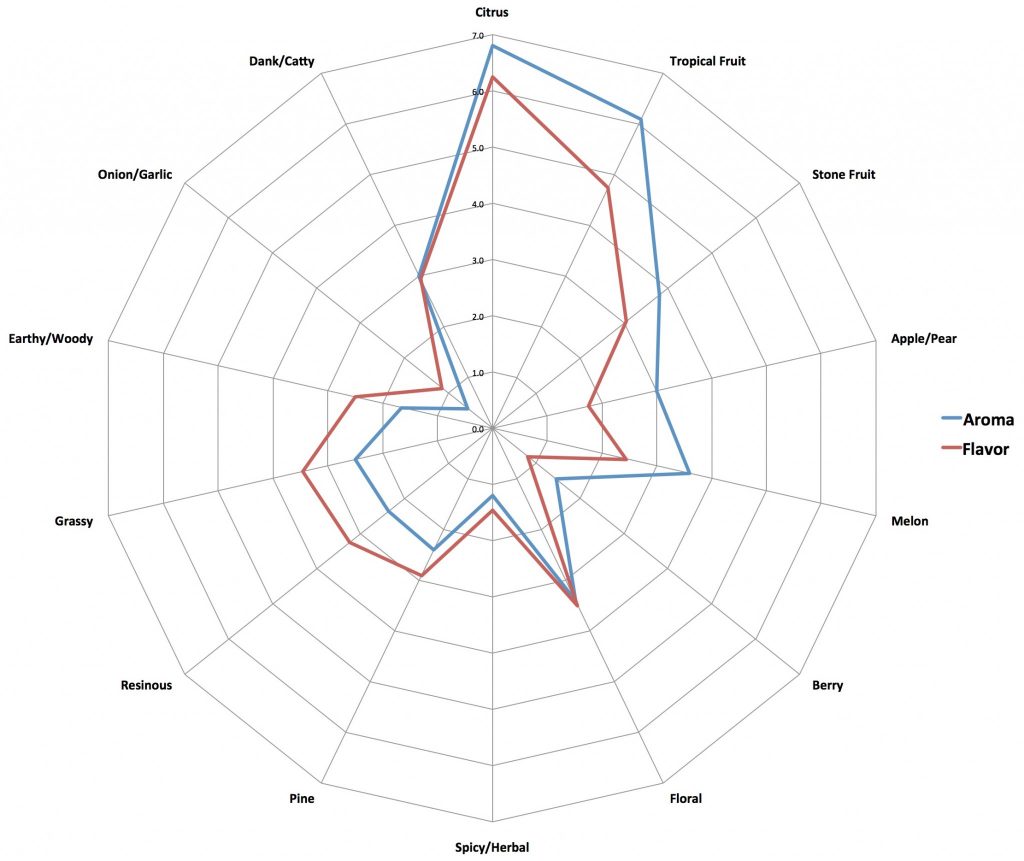
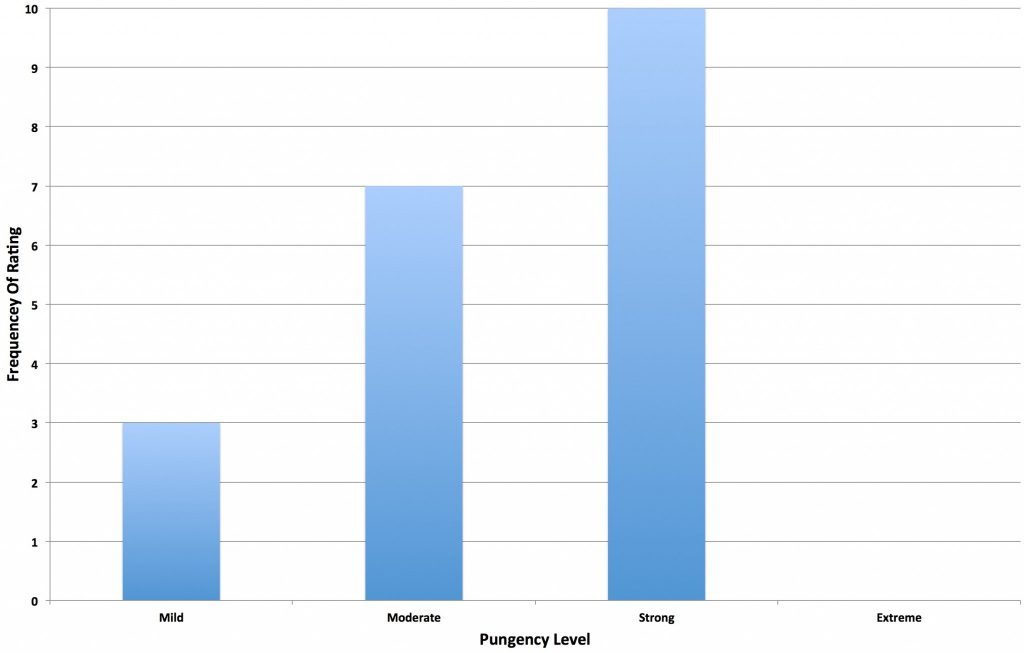
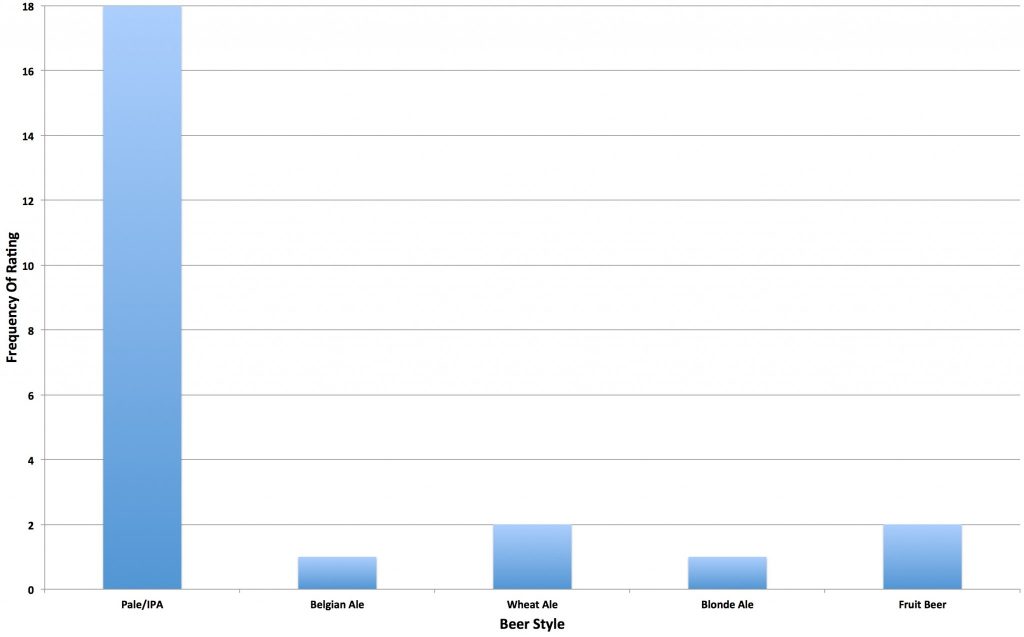
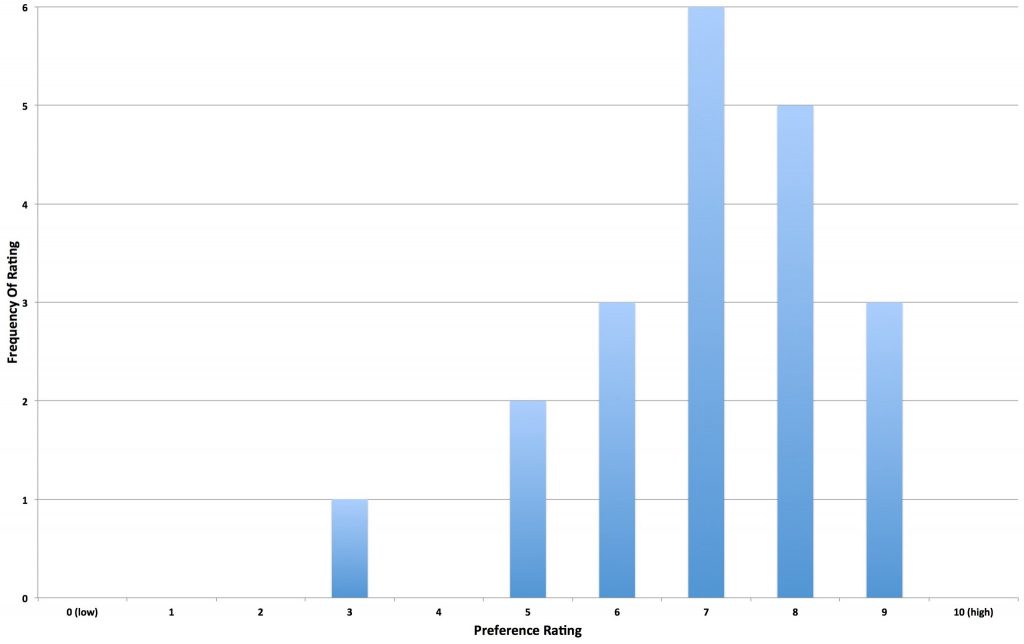










21 thoughts on “The Hop Chronicles | Galaxy (2015) Pale Ale”
I fell in love with Galaxy hops when first having them in Half Acre Galactic Daisy Cutter. I have brewed a few American Pale and IPA with it. My favorite brew had no hops till 10 minutes left. I loaded up Citra, Simcoe, and Galaxy hops at 10 minutes to get 40 IBU. Then did a hop stand and dry hop with the same 3 hops. Very much my favorite combo of hops in homebrew.
Can you also include a recipe with a clean bittering hop, as you mentioned you would use if you decided to brew this again?
I guess just substitute 60 min hop with 1 oz of magnum and you’d be alright
Correct. Due to the high AA%, Chinook or Magnum will work great. I personally use Warrior.
I’ve used Galaxy numerous times with Nugget as a bittering hop. Throw Citra in there with Galaxy and they make sweet love together.
Sounds amazing!
I’d love to hear your thoughts on the UniVessel–I’ve been seriously considering one for no-chill brewing.
And have you considered mashing in it, making it a true univessel?
I think it is a spectacular BIAB option but I have not done it yet.
If you don’t like cleaning, you will love it.
The UniVessel is a surprising versatile tool. Simple to use and it performed adorablyou as a brew kettle. I’ve been very impressed with what others have molded it with. Souring vessels, convection and traditional BIAB and more. It’s my first run with it so I can’t give you an “over time” review but my first run at it makes me think I have a winner. Between it and the Jaded Hydra chillet you see, my brew day is easily a half hour quicker.
If using Galaxy as a bittering hop you need to give it some time to smooth out, try the same beer in 4-5 weeks time.
Pretty much no one down here in Oz bitters with Galaxy due to the harsh character it gives. My motto with Galaxy is “Late and Heavy” – It is awesome as a cube hop addition when no chilling.
Also note… This year’s new harvest was a far superior crop for galaxy here in Oz!
Is it true that most of galaxy crops this year were destroyed by storms?
“Despite the difficult weather conditions, varieties such as Helga™, Summer™ and Cascade™ produced yields that were above expectation, however varieties such as Galaxy™, Vic Secret™, Ella™, Enigma™ and Topaz™ all suffered from the unseasonal conditions and in some areas the yields of the varieties were reduced by as much as 50%.”
http://www.hops.com.au/blog/2016-05/hop-products-australia-2016-crop-report
I just did almost this exact beer! I agree the galaxy bitterness is a bit harsh and does not compliment the great citrus aromatics that late/dry hopping presents. I love the hop but will look at a cleaner bittering hop or just ditch the 60 min addition altogether.
I find I have to leave Galaxy pale ales for a few months before drinking, It has a wierd flavour that does eventually mellow out. I thought initially that maybe it should only be used late in the boil but I did another brew with Galaxy used sparingly at 0min and dry hop stage and I could still detect the flavour. A couple of months later its gone, leaving a very fruity pale ale
I was surprised by the % of CaraPils in the grist (9%). Have you used this grist with a lower percentage, and did you find it very thin or watery?
I followed this recipe, except I used Magnum as the bittering hop and Wyeast Bavarian Lager with Marshall’s fast lager process.
It came out fantastic: something between an IPA and a crushable lager.
I’ve had nothing but trouble with Galaxy. Every, single time I get a weird, infected, grassy, coriander, biting bitterness that smells very little like tropical fruit.. even months on it never gets better and I end up tipping